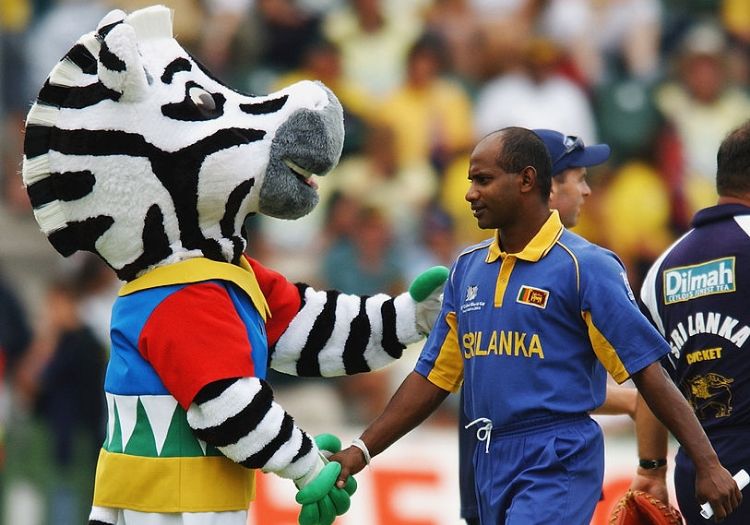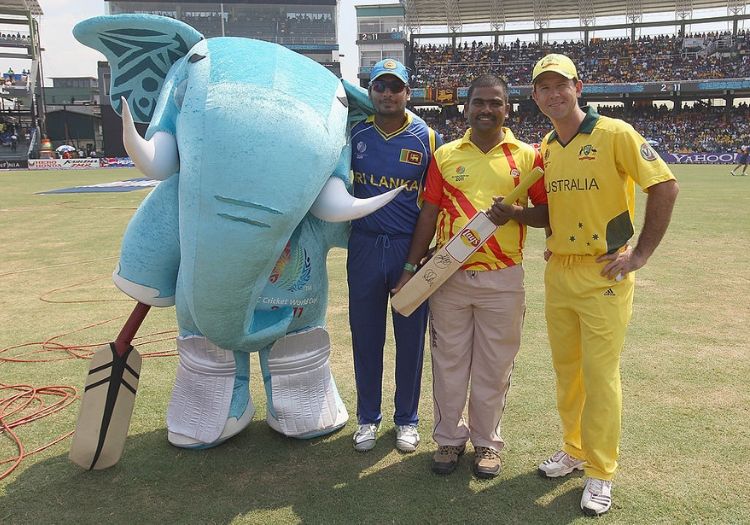Amid the seriousness of cricket's showcase event, a chunk of fun has been deducted straight from its heart and replaced with pure marketing


We're told that global elite sporting events are big and serious business. To organising committees, they are an opportunity to earn big bucks. For a country, tournaments represent an opportunity to enhance or rebuild their reputation in front of a huge global audience.
It might, therefore, be for this reason that the idea of the tournament mascot at the Cricket World Cup appears to have been ditched altogether. Why waste valuable money and effort designing, launching and indulging a symbol of a tournament which can either be easily derided by your critics or overlooked altogether.
After organisers of the event in 2015 decided against having a mascot, the same decision was reached for 2019 too. The days of an individual wandering around a particular outfield in an enormous suit causing chaos with every step are seemingly coming to an end. Other sports still persist, but cricket has decided it is not for them.
The brief trend of mascots at cricket's greatest event began in 1996 in Sri Lanka. 'Googlee', a red [rather than the tournament used white] cricket ball, with legs and arms was dressed in a helmet, gloves and green pads. Produced by Hindustan Thompson Associates, the vision was that the design would be a symbol for "intrigue, unpredictability, and the courage to dare to be different" just like its namesake.
WORLD CUP HUB
Three years later and the England and Wales Cricket Board enlisted the help of Rainbow Productions - a company name right out of the Alan Partridge copybook - to come up with the defining images of the 1999 tournament. What followed was 'Willow' - a rosey-cheeked boy with barely any distinguishable interest in cricket - and the rather familiar looking 'Yorker', who was merely a ball with a hat on.
After merely being cardboard cut-outs at the launch, when they were positioned on the MCC benches for photographs, 3D versions appeared at the opening ceremony. Two unfortunate females were paraded around the outfield in large suits with spotters to ensure they did not add to an already laughable occasion.
Not until 2003 was the true value of a mascot realised, when South Africa hosted the World Cup. What such a figure could represent and how it could tie-in with the tournament was finally understood, even if the final design remained confused.
Organisers shrewdly decided to unveil both the official logo and mascot at the same time, showing a direct link between the two. 'Dazzeler' the cricket-playing zebra helped highlight "the fusion of black and white peoples and the cultural diversity of South Africa," according to designer Nathan Reddy.
While previous mascots may have only had a fleeting link with cricket, press photos depicted him as a wicket-keeper bowler, batsman and even an umpire with both arms raised, indicating a six. Outings at the tournament itself were sporadic, though shaking hands with a bemused Sanath Jayasuriya was a particular highlight.

'Dazzeler' was a key figure at the 2003 tournament
By 2007, tournament organisers had cottoned on how to make the unveiling of a mascot both relevant to the message of the showcase and ensure it could garner some media interest. The West Indies revealed 'Mello' an organge mongoose who was decribed as not being an animal, person or object. Or in other words, all things to all people. He also had a red ribbon on his light blue, which was a nod to the growing HIV epidemic around the world.
Arguably the most visible World Cup mascot yet, he was seen at the toss at various games and pictured alongside the likes of Ricky Ponting, Graeme Smith and Brian Lara. He was accompanied by a large bat, which any of the aforementioned trio would have loved to have used.
The final of our entries comes from 2011, the impossible to miss 'Stumpy' who was named not by committee but via an online public vote. The ICC said the elephant "believes in hard work and is always learning to master the art of concentration and was also described as "young and enthusiastic, and a determined individual".
Stumpy, with a bat attach to one leg and pads adorning two others, pranced around grounds, was seen at nearly every game, with his large frame making its way into all the pre-game photos. Indeed, he was more of a novelty item on display than a symbol of the tournament.

'Stumpy' was named via an online poll
For two editions now the idea of having a mascot has been firmly ditched. Australia and New Zealand and now England have opted against following the trend, preferring to use other methods to engage their younger fans.
There is little evidence not having a mascot on board will affect the success of any tournament, particularly with youngsters. The ECB's desire to take cricket to one million children is assisted by their relationship with various charities and by the World Cup Trophy Tour.
Hosting major sporting events is as expensive as ever in the modern era, so it is understandable that such frivolous costs are now deemed unnecessary. Furthermore, such is the manner many seek to be offended that launching any kind of figurehead which strives to unite people can be problematic.
But with a mascot there is a feeling of being off-script, giving a tournament some character and a defining symbol which the sport doesn't always deliver. Mandatory they aren't, but necessary they should be.
Our coverage of the ICC Cricket World Cup 2019 is brought to you in association with Cricket 19, the official video game of the Ashes. Pre-order your copy now at Amazon.co.uk
Subscribe to The Cricketer for exclusive content every day: The inside track on England's Test tour with George Dobell in Pakistan, award-winning analysis, breaking news and interviews and the only place for in-depth county coverage all year round. Plus: An ad-free app experience at your fingertips. Subscribe to thecricketer.com today for just £1.